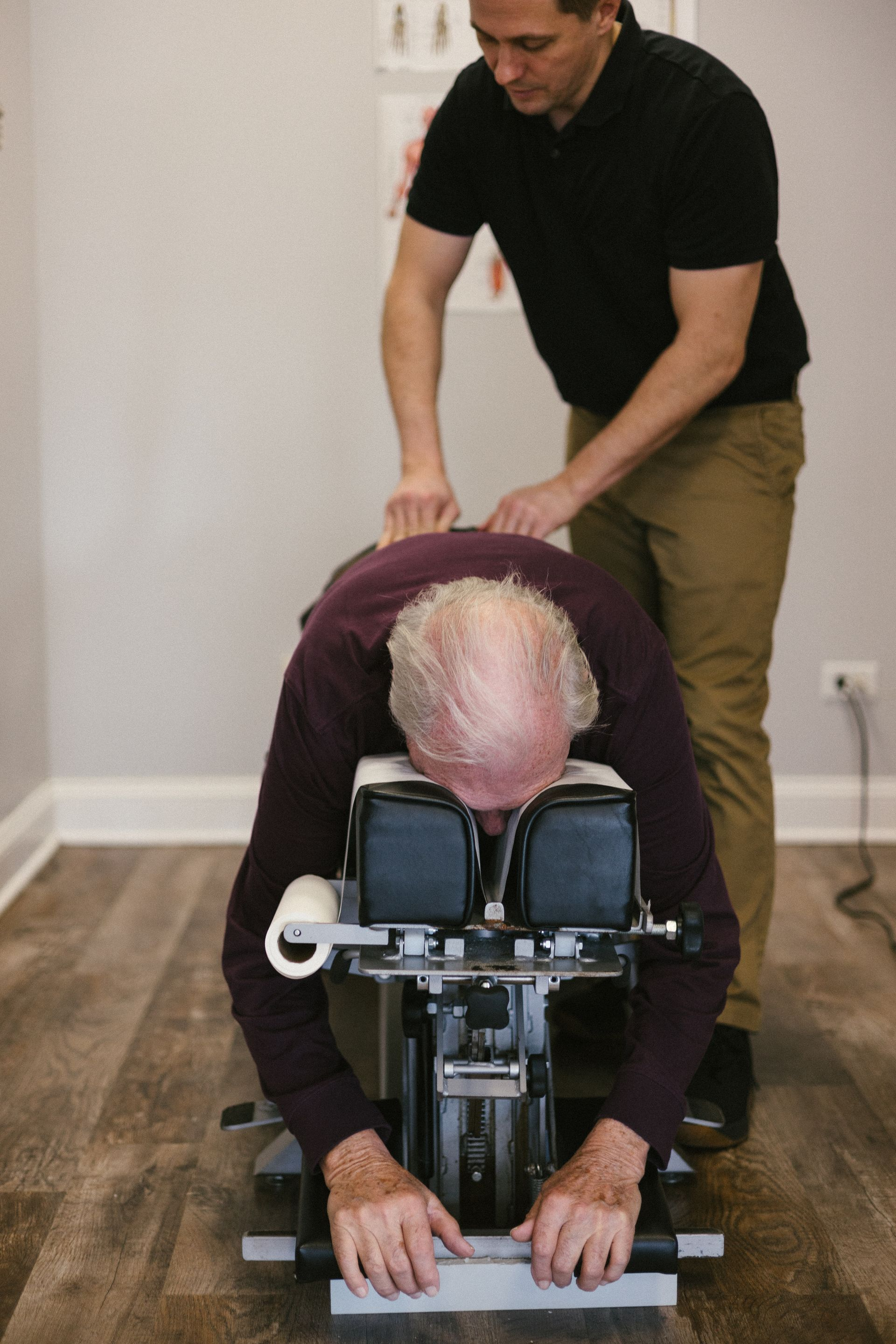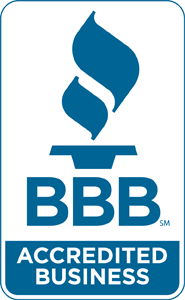How Self-Checks Can Be Part of Your Regular Health Routine
Image Source: Unsplash
Are you looking for ways to incorporate self-checks into your regular health routine? Look no further! In this article, we will explore how self-checks can be a valuable addition to your overall well-being, especially when combined with chiropractic care.
Maintaining good health often requires proactive measures, and self-checks play a crucial role. By learning simple techniques, you can monitor your body and identify any signs of potential issues early on. This is where chiropractic care comes in.
Chiropractic focuses on the musculoskeletal system and aims to optimize your body's function and performance. By combining self-checks with regular chiropractic adjustments, you can take control of your health and address any problems before they become major concerns.
Whether it's performing simple self-massage techniques to relieve tension or assessing your own posture, self-checks empower you to be proactive with your health. In this article, we will dive deeper into the various self-checks you can incorporate into your routine and how they can complement chiropractic care. Get ready to take charge of your well-being and unlock the benefits of self-checks alongside chiropractic.
Understanding self-checks and their importance in maintaining good health
Self-checks are an essential part of maintaining good health. They involve taking time to assess your body and monitor any changes or abnormalities. This proactive approach allows you to catch potential issues early on and seek appropriate care. Self-checks can be performed in the comfort of your own home and require no special equipment.
Regular self-checks help you develop a better understanding of your body and its needs. By paying attention to subtle changes, you can identify potential problems before they escalate. Self-checks also encourage self-awareness, allowing you to take charge of your health in partnership with medical professionals.
While self-checks are not a substitute for professional medical advice, they can provide valuable insights and complement the care you receive. By incorporating self-checks into your regular health routine, you can become an active participant in your well-being.
The role of chiropractic care in self-checks
Chiropractic care plays a significant role in self-checks by focusing on the musculoskeletal system. Chiropractors are trained to assess and address issues related to the spine, joints, and muscles. By combining self-checks with regular chiropractic adjustments, you can have a comprehensive approach to your health.
Chiropractic care promotes proper alignment and function of the spine, which is essential for overall well-being. Misalignments, also known as subluxations, can interfere with the body's natural healing abilities and lead to various health concerns.
Regular chiropractic adjustments can help correct these misalignments and restore optimal function.
When it comes to self-checks, chiropractors can provide guidance on specific techniques and indicators to watch out for. They can teach you how to assess your posture, joint mobility, muscle strength, and balance. By incorporating chiropractic care into your self-check routine, you can address any imbalances or issues more effectively.
Benefits of incorporating self-checks into your regular health routine
Incorporating self-checks into your regular health routine brings several benefits. Firstly, it allows you to develop a deeper understanding of your body's unique needs and patterns. By regularly monitoring your health, you will be more attuned to any changes or potential issues that may arise.
Self-checks also promote early detection of problems. By being proactive and catching issues in their early stages, you can seek appropriate care sooner, potentially preventing further complications. Early intervention is often key to successful treatment and recovery.
Furthermore, self-checks empower you to take control of your health. By actively participating in your well-being, you become an advocate for yourself. Self-checks provide a sense of empowerment and can enhance your overall quality of life.
By incorporating self-checks into your regular health routine, you can experience a more holistic approach to well-being. When combined with chiropractic care, you can optimize your body's function and address any issues promptly. Get ready to unlock the benefits of self-checks alongside chiropractic!
Common self-checks for spinal health and alignment
Taking care of your spine is crucial for overall health and well-being. The spine provides support, protects the spinal cord, and allows for movement. Regular self-checks can help you monitor your spinal health and alignment. Here are some common self-checks you can incorporate into your routine:
- Posture assessment: Stand in front of a mirror and observe your posture. Check if your shoulders are level, your head is aligned with your spine, and your hips are even. Poor posture can lead to muscle imbalances, joint pain, and other issues.
- Spinal range of motion: Gently rotate your neck, shoulders, and lower back to assess your range of motion. Pay attention to any restrictions or discomfort. Limited range of motion may indicate underlying issues that need to be addressed.
- Spine alignment: Lie on a firm surface and observe the alignment of your spine. It should have a natural curve in the neck, upper back, and lower back regions. If you notice any excessive curvature or flattening, it may be worth seeking chiropractic care.
Regularly performing these self-checks can help you identify any potential spinal issues and take appropriate action. Remember, if you notice any persistent pain, discomfort, or significant changes, it's always best to consult with a healthcare professional.
Self-checks for joint mobility and flexibility
Maintaining joint mobility and flexibility is essential for optimal function and overall well-being. Here are some self-checks you can incorporate to assess your joint health:
- Shoulder mobility: Raise your arms overhead and behind your back, checking for any restrictions or discomfort. You should be able to move your shoulders through a full range of motion without pain or difficulty.
- Hip flexibility: Sit on the edge of a chair and cross one ankle over the opposite knee. Gently press down on the raised knee to assess hip flexibility. Both hips should have similar range and ease of movement.
- Ankle mobility: Stand with your feet shoulder-width apart and try to touch your toes without bending your knees. Assess the range of motion and any restrictions or discomfort.
Regularly performing these self-checks can help you identify any joint mobility or flexibility issues. If you notice any limitations or persistent discomfort, it may be beneficial to seek chiropractic care to address the underlying causes.
Self-checks for muscle strength and balance
Muscle strength and balance are vital for overall stability and mobility. Here are some self-checks you can incorporate to assess your muscle health:
- Core strength: Lie on your back and lift your legs off the ground, keeping them straight. Hold the position for a few seconds and lower them back down. Assess any difficulties or muscle weakness during the exercise.
- Balance test: Stand on one leg and lift the other leg off the ground. Try to maintain your balance for at least 30 seconds. Pay attention to any wobbling or difficulty in maintaining stability.
- Strength assessment: Perform simple exercises like squats, push-ups, or planks to assess your overall strength. Note any muscle weakness, imbalances, or pain during the exercises.
Regularly performing these self-checks can help you identify any muscle strength or balance issues. If you notice any significant weaknesses or difficulties, it may be beneficial to consult with a healthcare professional or chiropractor for personalized guidance.
How to perform self-checks effectively and safely
Performing self-checks effectively and safely requires attention to detail and proper technique. Here are some tips to ensure you get the most out of your self-checks:
- Educate yourself: Learn about the specific self-checks you want to incorporate into your routine. Understand the correct technique, indicators to look for, and any precautions to consider.
- Take your time: Set aside dedicated time for self-checks, ensuring you have enough time to perform them thoroughly. Rushing through self-checks may lead to overlooking important indicators or not performing the checks correctly.
- Listen to your body: Pay attention to any discomfort, pain, or unusual sensations during self-checks. If something feels off or causes significant discomfort, it's best to consult with a healthcare professional.
- Seek professional guidance: If you're unsure about performing self-checks or need personalized guidance, consider consulting with a chiropractor or healthcare professional. They can provide expert advice and ensure you're performing the checks correctly.
Remember, self-checks are meant to be a proactive measure to monitor your health. They are not a substitute for professional medical advice or diagnosis. If you have any concerns or persistent issues, it's always best to consult with a healthcare professional.
Integrating self-checks with chiropractic adjustments
Integrating self-checks with regular chiropractic adjustments can enhance your overall well-being. Here's how you can combine the two effectively:
- Communicate with your chiropractor: Share your self-check routine with your chiropractor and discuss any specific concerns or areas you want to focus on. They can provide guidance and tailor their adjustments to complement your self-checks.
- Follow your chiropractor's recommendations: Your chiropractor may recommend specific self-checks to perform between adjustments. These self-checks can help you monitor progress and identify any issues that need further attention.
- Stay consistent: Incorporate self-checks into your regular health routine and attend your scheduled chiropractic adjustments. Consistency is key to experiencing the full benefits of both practices.
By integrating self-checks with chiropractic adjustments, you can take a proactive approach to your health and ensure optimal function and alignment. Remember, chiropractic care should always be performed by a licensed professional.
Other self-checks to consider for overall health and wellness
In addition to the specific self-checks mentioned earlier, there are other self-checks you can consider to promote overall health and wellness. Here are a few examples:
- Skin self-examination: Regularly check your skin for any changes, such as moles, blemishes, or rashes. Pay attention to any new or evolving spots and consult with a dermatologist if you have any concerns.
- Breast self-examination: For women, regularly perform breast self-examinations to check for any lumps, changes in size or shape, or nipple discharge. Report any abnormalities to your healthcare provider.
- Oral health assessment: Check your mouth regularly for any signs of gum disease, cavities, or changes in your oral tissues. Maintain good oral hygiene and schedule regular dental check-ups.
Remember, these self-checks are not meant to replace professional medical advice or screenings. They serve as additional measures to monitor your health and identify potential issues. If you have any concerns or notice any significant changes, it's best to consult with a healthcare professional.
Conclusion: Taking control of your health with self-checks and chiropractic care
Incorporating self-checks into your regular health routine, alongside chiropractic care, can empower you to take control of your well-being. Self-checks allow you to monitor your body and identify any potential issues early on, while chiropractic care focuses on optimizing your musculoskeletal system.
By performing self-checks for spinal health and alignment, joint mobility and flexibility, and muscle strength and balance, you can gain a deeper understanding of your body's unique needs. Remember to perform self-checks effectively and safely, seeking professional guidance when needed.
Integrating self-checks with chiropractic adjustments enhances the benefits of both practices. By communicating with your chiropractor and staying consistent, you can optimize your body's function and address any issues promptly.
In addition to specific self-checks, considering other self-checks for overall health and wellness, such as skin self-examination and oral health assessment, can further support your proactive approach to well-being.
Remember, self-checks are an essential part of maintaining good health, but they are not a substitute for professional medical advice or screenings. If you have any concerns or notice any significant changes, it's always best to consult with a healthcare professional. Take charge of your health and unlock the benefits of self-checks alongside
chiropractic care.














